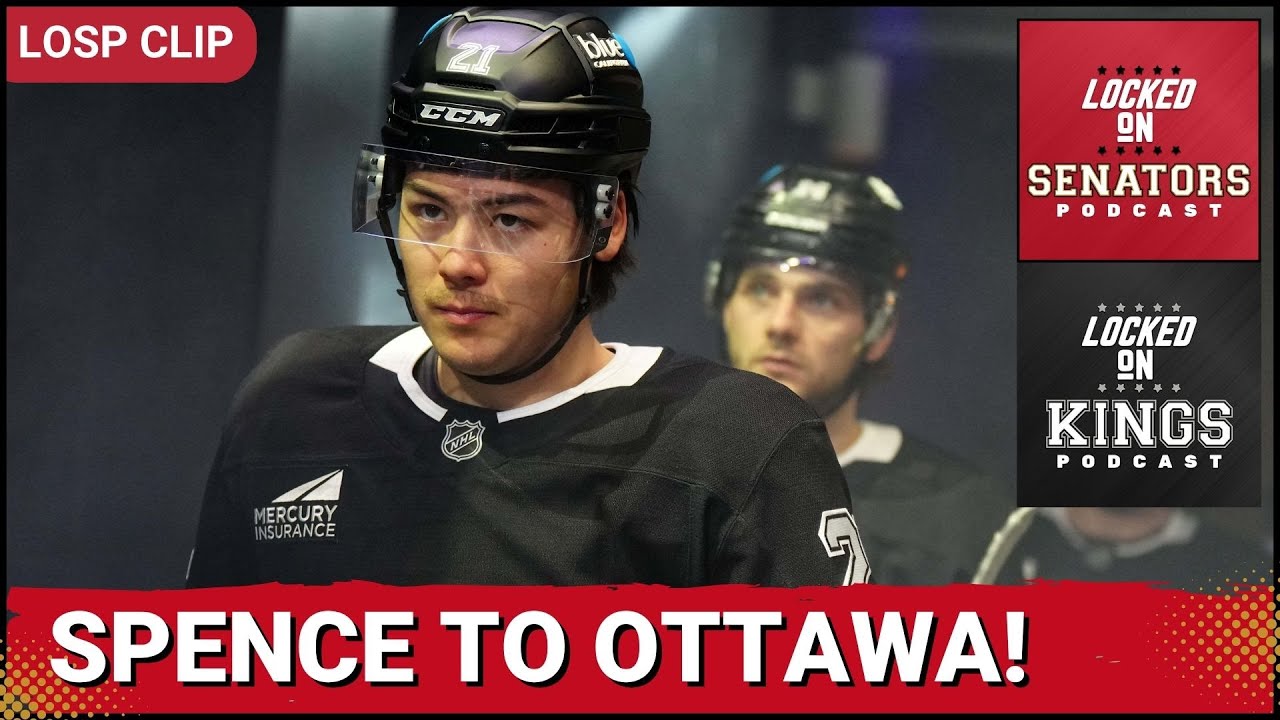The eternal quest for a reliable, impactful right-shot defenseman in the National Hockey League often feels like a modern-day search for a mythical creature. For the Ottawa Senators, this particular narrative has recently found a hopeful new chapter with the strategic acquisition of Jordan Spence. General Manager Steve Staios`s calculated move isn`t just another roster adjustment; it`s a pointed effort to rebalance their defensive corps and inject a much-needed brand of dynamic puck movement from a position that has long been a point of strategic vulnerability.
Addressing a Persistent Imbalance on the Blue Line
For several seasons, the Senators` blue line, despite featuring high-caliber left-shot talents like Jake Sanderson and Thomas Chabot, has grappled with a noticeable deficiency on its right side. The inherent challenges of deploying left-shot defensemen on their off-side – a common, if often suboptimal, league-wide workaround – frequently manifested in less efficient puck management, slower breakouts, and a general curtailment of offensive creativity. Former Senator Jakob Chychrun`s experience, for instance, underscored these inherent difficulties, eventually leading to his trade. While players like Nick Jensen brought a welcome measure of stability, and Nikolas Matinpalo demonstrated a commendable, albeit less flashy, presence, the team yearned for more than just steady hands; they needed an offensive catalyst from the right flank.
“Right-shot defensemen are at a premium in the NHL, and the Senators have observed firsthand the consequences of being under-resourced in this critical area.”
Jordan Spence: The Modern Defensive Solution
At 24 years old, Jordan Spence arrives in Ottawa heralded as an “elite puck-moving defenseman” – a designation that tends to make general managers across the league pay close attention. His tenure with the Los Angeles Kings provided substantive evidence of his capabilities. Modern analytics, the increasingly indispensable compass for hockey operations, painted a clear and favorable picture. The Kings, for example, consistently performed more effectively at five-on-five with Spence on the ice, registering a superior expected goals rate. This isn`t merely about personal point totals; it signifies an ability to control territorial play, facilitate seamless transitions from defense to offense, and generate sustained pressure from the back end – precisely the attributes vital for a Senators offense that concluded last season ranked second-last in five-on-five goals.
Spence`s 28 points, including four goals, last season offer a stark contrast to the combined seven goals from all right-shot defensemen previously on Ottawa`s roster. This isn`t a minor offensive tweak; it represents a fundamental enhancement to how the Senators can initiate and sustain their attack from the defensive zone, easing the burden on their forwards and the left-side defensemen who previously carried the bulk of the offensive load from the back.
Motivation Meets Opportunity: A Timely Alignment
Beyond the raw statistics, Spence brings a potent personal motivation to Ottawa. As a restricted free agent at the conclusion of the upcoming season, his desire to firmly establish himself as a top-four defenseman – a role he found challenging to consistently secure in Los Angeles – serves as a powerful impetus. “I`m not really focused on (the contract) at all, whatsoever,” Spence stated, a common refrain in professional sports. However, his subsequent remark, “I think it just matters how I play this season,” rings with a genuine determination to capitalize on this fresh start. This convergence of individual ambition and team necessity aligns seamlessly with a Senators organization that, as captain Brady Tkachuk recently affirmed, is approaching the new season with a definitive “Stanley Cup mindset” following their recent playoff appearance. The timing, for both player and club, appears remarkably fortuitous.
Navigating the Nuances: Size, Style, and System Integration
No high-impact acquisition is entirely without its specific considerations. Spence, at five-foot-ten, is an undersized defenseman not primarily renowned for his physical play. Historically, Ottawa has experienced both the stratospheric highs (one need only mention a certain generational talent named Erik Karlsson) and the frustrating struggles (Erik Brannstrom, for a more recent example) of similar defensive archetypes. The pertinent question, therefore, is not whether an undersized player can thrive, but whether Spence can adeptly leverage his elite hockey IQ, exceptional puck-moving ability, and positional awareness to effectively mitigate any physical disadvantages within Head Coach Travis Green`s evolving system.
Once veteran defenseman Nick Jensen returns from his off-season hip surgery, Coach Green will preside over a significantly deeper and more versatile defensive unit. The projected depth chart underscores this newfound flexibility and competitive internal environment:
- Sanderson – Zub
- Chabot – Jensen
- Kleven – Spence
- Matinpalo – Yakemchuk (providing robust depth and future potential)
This enhanced depth offers Green a broader palette of options, allowing him to more effectively tailor pairings to specific in-game situations and opponent matchups, reducing the undue reliance on any singular player.
Conclusion: A Decisive Step Towards Contention
The arrival of Jordan Spence marks a pivotal and declarative moment for the Ottawa Senators. It represents a clear statement from management regarding their unwavering commitment to systematically addressing team weaknesses and cultivating a roster capable of sustained, high-level performance. By strategically integrating an elite puck-moving, right-shot defenseman, the Senators are not simply upgrading a positional vacancy; they are fundamentally enhancing their overarching offensive philosophy and reinforcing their defensive stability. While the ultimate impact will be adjudicated on the ice over the coming season, the initial indicators suggest that Ottawa has indeed executed a significant “right turn” on its ambitious journey towards becoming a perennial NHL contender. The hunt for the elusive right-shot unicorn may finally be over; now, the real work of harnessing its power begins.

